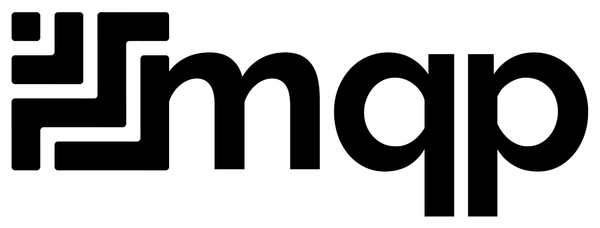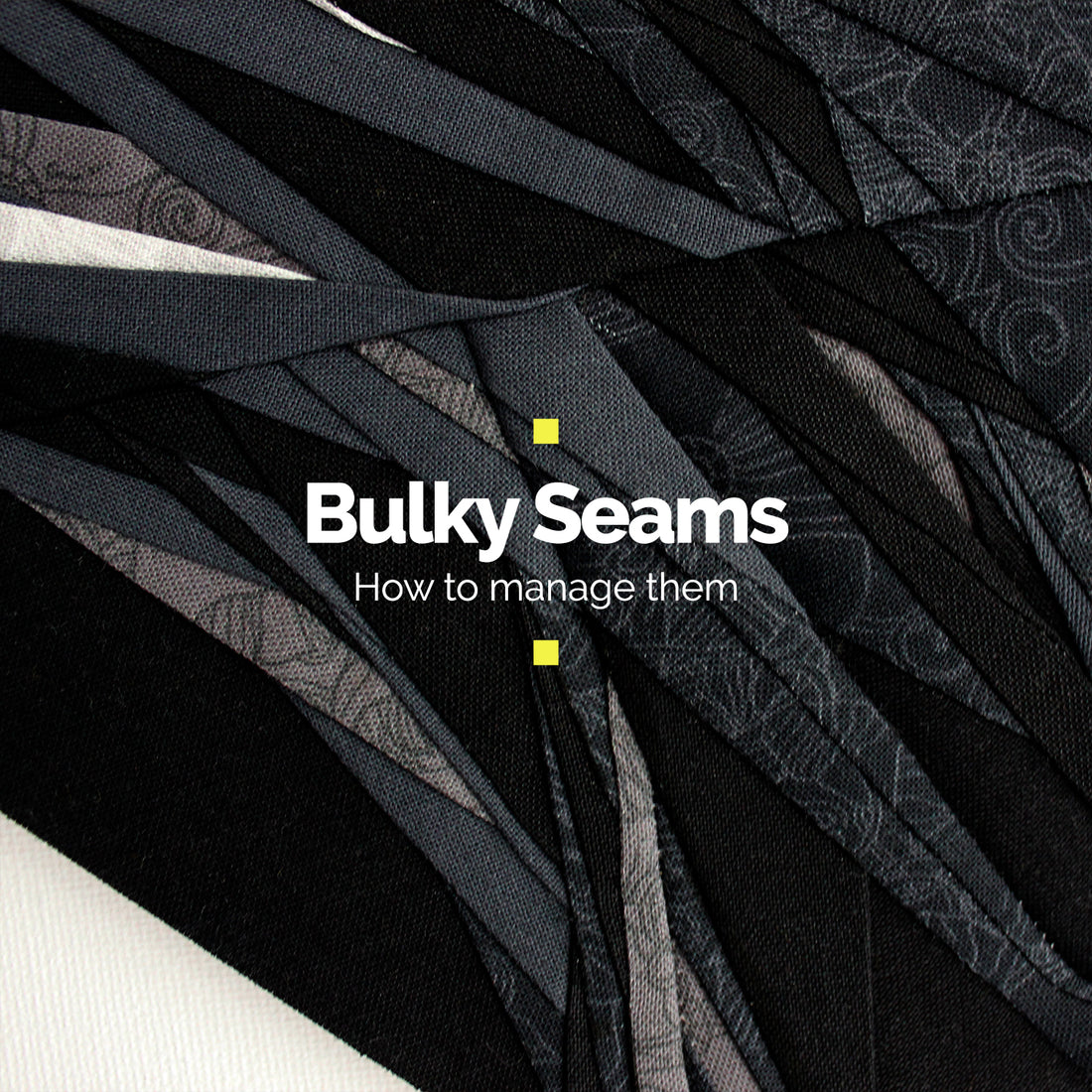Most sewing tutorials teach you to reduce fabric thickness in seam allowances, seen as a real nuisance for the sewing machine and the final result of your project.
In patchwork, when assembling pieces, they can create an uncontrolled shift in lines and distort the initial design.Moreover, these thicknesses can be difficult to sew, even break your needles.🤔
But today, I want to encourage you to see them differently and include them in your quilts, because these perceived enemies turn out to enhance the complexity of a patchwork by bringing an unmatched density, even by the most beautiful fabric patterns.
Like a painter working on a relief canvas with surplus material. It gives body and depth to the final result.
Let's see together how to transform the seam allowance from a sewer's enemy to a real work enhancer for your future quilt compositions. 👌
In this article, I will use the "Black unicorn" as an example, which is a pattern classified as experienced quilters, with over 800 pieces, only 5 colors, for a size of 23,6x34.

This implies fabric pieces of less than 1cm for some of them, so a real challenge of thicknesses to manage.
My goal is for you to consider fabric thicknesses as a great asset to complement a reduced number of colors, a particular choice of textures, and to generate a dense 3D patchwork effect.
1. The Finger Pressing
It wonderfully replaces the iron for flattening your seams in the thickest areas. I even find it better because the fabric distribution is more precise. 🧐
Grab your 2 freshly assembled blocks between your fingers as shown in the video below, and gently fold the top layer over the bottom one while pressing firmly. As if you were rolling it. You will thus feel the thicknesses under your fingers and conceal the stitching points of the junction.
Press firmly on the bumps, and if necessary, use a plastic hammer while placing a piece of fabric in between to avoid damaging your work.
2. The Hammer
One of my favorite tools, as I quilt only "bulky" patchworks. Choose one made of plastic to cushion the impact and avoid damaging your fabric, and place your work to be struck on a hard surface like a table.
Tap gently to see how your intersection behaves, and focus on the larger bumps. The idea is to harmonize the thickness level of an entire line. Alternate with finger pressing to restore any folds that have been overly flattened and might tend to "wander" off course.
3. Change your needle when assembling large pieces
Once you finish assembling your small sections, it's time to put all these sections together. This is where precision is key, to properly align the lines and maintain the continuity of the basic design.
The challenge is that at this stage, you may be sewing together 4, 6, or even 8 layers of fabric seam allowances. Depending on your machine, this can become complicated for the motor, but especially for the thin needle you've been using since the beginning of your project.
Therefore, consider replacing it with a denim needle, which is thicker and more durable.

Anyway, the thickness of the needle doesn't matter at this stage because this seam won't be visible with the finger pressing technique I mentioned earlier. 🤷♀️
And if your machine's motor struggles, don't hesitate to switch to manual mode.
4. Shifting the stitching line
This tip saved my life when I assembled the large sections of my first complex quilts.
When you know you're going to sew together 2 pieces with many layers, choose to stitch 1 to 2 mm further from the seam line of the pattern (towards the outside) to compensate for the offset due to these layers.
To ensure that your project is still properly aligned, always check that the lines of the pattern meet. If necessary, make corrections because like the butterfly effect, a small misalignment observed from the first pieces, and repeated on the following ones, will inevitably lead to a big misalignment at the end of the project. 😭
5. Prioritize alignments
Sometimes you'll need to make trade-offs on which alignments to prioritize. They're not all equal. Let me explain.
When assembling 2 sections together, first take a look at the basic design and observe the lines that need to be connected to create visual continuity. Most of the time, they are the hair lines or the junction of the contouring lines of the draw.
These are the lines you should prioritize aligning because the eye needs guidance. If you align the continuous lines, then the small discrepancies around them won't matter anymore, and your result will seem flawless, even if it isn't (but only you will know 😉).
6. Which side to lay the seam allowances?
Well, that depends on the reality of the thickness in hand.
Which of these 2 sections you're about to assemble is the heaviest? Choose to lay your seam allowance on the lighter side.
Another tip to be sure, once 2 sections are sewn together, twist the seam allowance to one side, then to the other to see how the fabric assembly is placed. This technique will immediately tell you where it's tight, and let you deduce the best choice.
It could also be an artistic choice, in which case, you'll naturally lay your seam allowances on the natural side of the design. In this video, for example, I chose to lay my seam allowances on the opposite side of the unicorn's mane (it's a bit like the styling of patchwork ^^), so on the other side, we can see that the fabrics from the top section cover those from the bottom section.
7. Reducing the seam allowance from ¼ to ⅛”
As the areas become smaller, it's essential to decrease the seam allowances.
By default, my patterns include a ¼” seam allowance. However, in certain instances, it's necessary to reduce this to ⅛” or even less.
If you find that the seam allowance will extend beyond the next fabric margin, feel free to trim it. Just ensure that you leave enough fabric to fold over.
8. Layering Method
This method doubles your seam trimming time but proves beneficial for gradually smoothing out thicknesses.
The principle is straightforward. After sewing two fabric pieces together, trim one of the seam allowances to the recommended size and the second seam allowance by half. This creates a sort of gently sloping staircase.
By accumulating these gentle slopes in your projects, you achieve a smoother appearance and, consequently, a more aesthetic result. 👏
Managing bulky seams open many creative possibilities
Here are the techniques I use to assemble the patterns I design. I consider myself meticulous, and I have a strong need for accuracy and precision in my alignments and final rendering.
Learning to manage thicknesses will allow you to access quilt designs much more complex than those you're used to crafting, thus enabling you to create almost anything you like, and the results are astonishing.
I've gotten into the habit of sewing sections that sometimes measure barely a few millimeters. I then set the stitch length to the smallest possible (1), and it works.
I hope these tips will be as useful to you as they are to me.
My black unicorn is progressing nicely, and I expect to have it finished in about ten days. I will be sure to share photos of my progress and the final result with you.
In the meantime, if you have any other concrete questions about managing thicknesses that I haven't covered in this article, feel free to ask them in the comments. So I can share new tips to other quilting enthusiasts who come across this.


